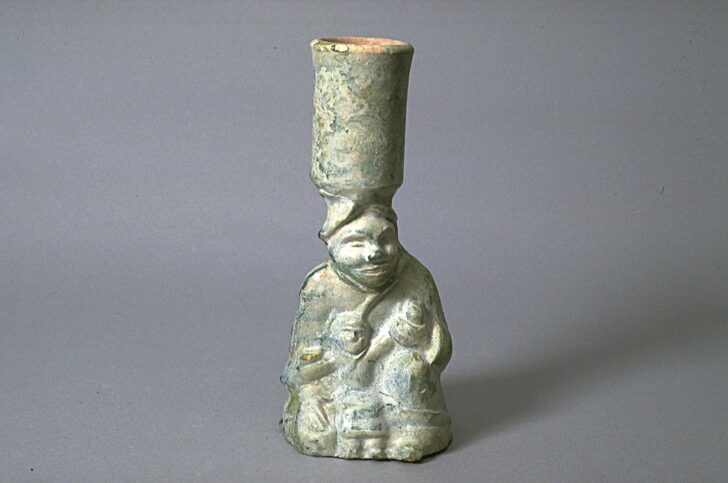Candlestick Holder
Chinese

Description
Subject Matter:
A candlestick holder in the form of a parent with child.
Since the Qin dynasty (221 - 206 BCE), ceramic figures have been used to replace human sacrifice in burial practices as mingqi (明器), literally "bright objects," or grave goods, as a way to provide for the deceased. Mingqi could include houses, towers, gates, granaries, livestock pens, chicken coops, wells, cooking stoves, storage vessels, dishes, incense burners, and lamps. Figures could include horses, dogs, anthropomorphic animals and people such as officials, guardians, servants and entertainers. By the Han dynasty, they also included representations of common people engaged in the activities that consumed their daily lives such a cooking. The tombs in southern provinces of Sichuan and Shaanxi have revealed a vast array of figures in playful and humorous poses. As grave goods, these mingqi included everything one would need to ensure a comfortable transition into the afterlife. A tomb could contain anywhere from a few to several hundred ceramic mingqi items.
Physical Description:
A red earthenware candlestick holder in the form of a large, androgynous human figure, presumably female, kneeling, with a child. There is a cylindrical holder for a candle on the larger figure's head. The candlestick is covered in a green lead glaze, with iridescence and calcification.
Usage Rights:
If you are interested in using an image for a publication, please visit https://umma.umich.edu/request-image/ for more information and to fill out the online Image Rights and Reproductions Request Form.